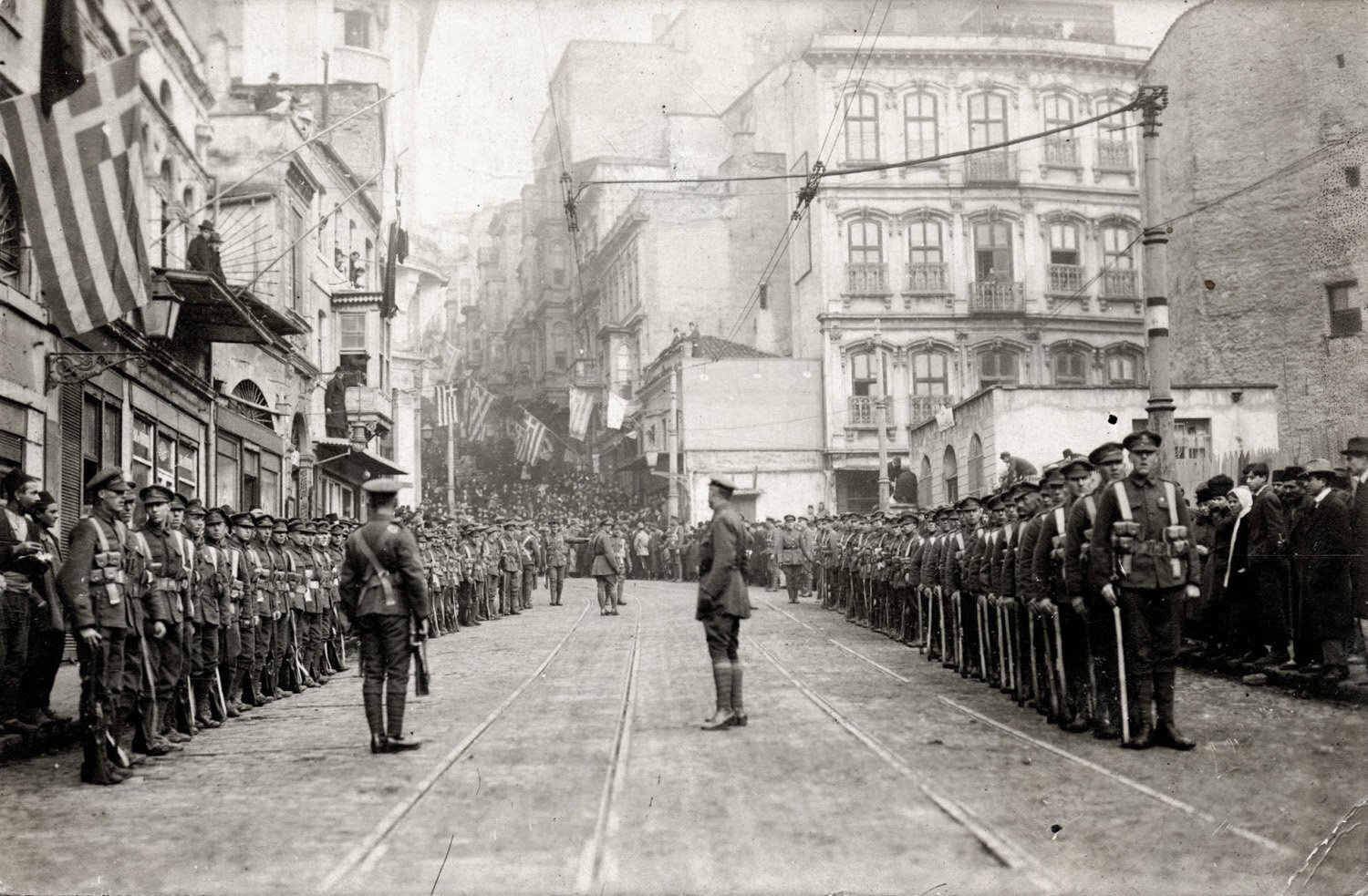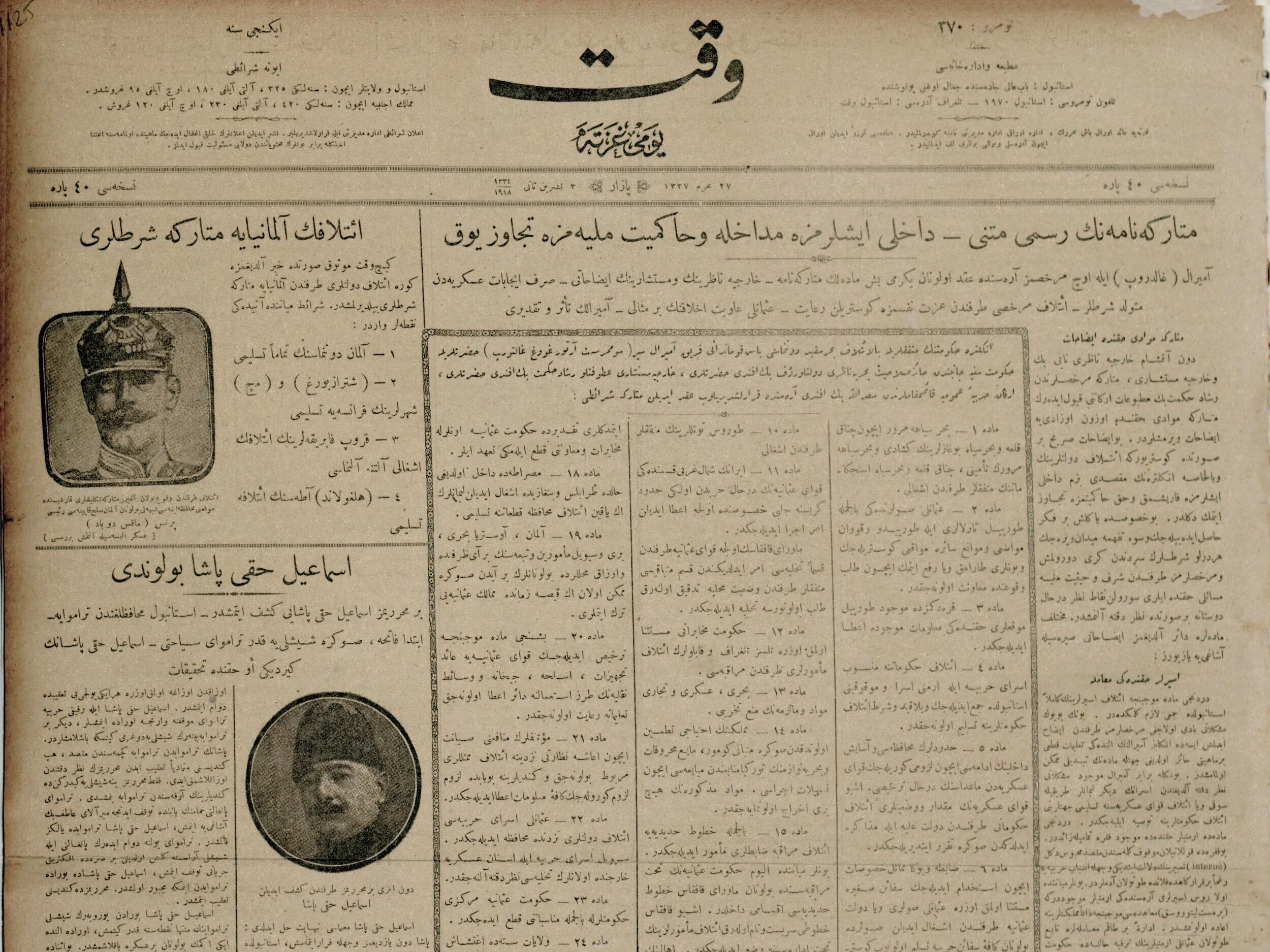
Occupied Istanbul (1918-1923)
The Project
With a grant from the American Research Institute in Turkey, I began a new research project on Istanbul under Allied military occupation (1918-1923). I am in the process of designing a digital research tool that uses mapping and network analysis to study the mobility and shifting political orientation of Ottoman intellectuals and bureaucrats in occupied Istanbul. It will also trace their movement out of the capital to key sites where Ottomans concentrated inside and out of the conquered empire: British internment camps in Malta, Berlin, Geneva, Paris, in Ankara, İzmir/Smyrna, the Allied occupied Arab provinces (especially Damascus), the Caucuses, and Central Asia. One of the difficulties in studying the chaotic period of the Armistice in the Middle East is tracking the ways in which occupation policies in Istanbul interacted with Allied decisions at Paris, and how they shaped local resistance and pushed would be Ottoman imperialists firmly into the national camp—not just in Istanbul and those lands that what would become Turkey, but also in the Arab provinces.
Being able to track the mobility of key figures in and out of Istanbul, Damascus, prisoner camps in Malta etc., and to correlate location with the particular timing of public debates will be extraordinarily useful for understanding how and why actors across the Middle East made decisions about their political futures—or if they were even able to make such decisions. While this research tool will aid me with organizing and framing the argument of my new book project, I will make it available to other researchers and students. Ultimately, the project will resolve into a public facing interpretive site.
In the summer of 2019, I conducted preliminary research at the Ottoman Archives and looked at how the Istanbul government functioned under occupation during the Paris Peace Conference. Many Ottoman intellectuals, some of whom were trained as lawyers before the First World War, found themselves in governing positions for the first time, but one that was heavily circumscribed by the occupation. I am in the process of tracing debates among intellectuals in the Ottoman Turkish press and have been using the digitized newspaper collections at the Millî Kütüphane (National Library) in Ankara and the Atatürk Kitaplığı (Atatürk Library) in Istanbul.
PRELIMINARY RESEACH QUESTIONS
The Paris Peace Conference
How did events at the Paris Peace Conference circumscribe possibilities on the ground and shape debates in Istanbul? Newspapers across the political spectrum closely tracked policy decisions in Paris—including the announcement of the Class A Middle East mandates and Greek claims to Ottoman territory—which had a clear effect on how locals made claims about the future of the empire.
Newspapers & Intellectuals
What were the main debates in the press before Britain reimposed strict press censorship (November 1918-March 1920)? How did intellectuals envision the future of the empire, the Arab provinces and the status of non-Muslims? Several newspaper editors were appointed to bureaucratic posts and also managed to maintain links to American officials in Istanbul during this period.
The Malta Prisoners
Throughout the Armistice, British authorities throughout the Middle East, exiled political dissidents to camps in Malta. Nationalists from Cairo were imprisoned alongside bureaucrats and intellectuals from Istanbul—many of whom wrote memoirs about their experiences. How did exile and incarceration determine political outcomes in the postwar Middle East ?



